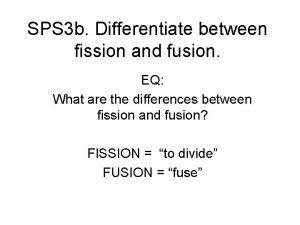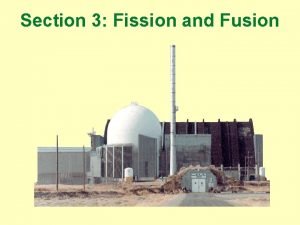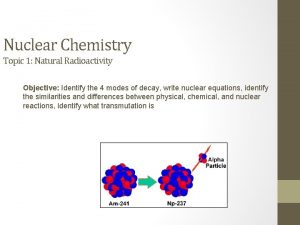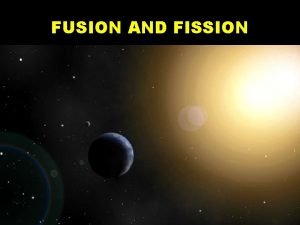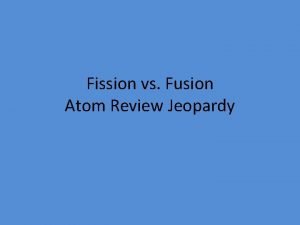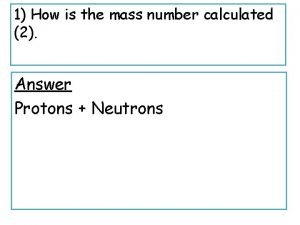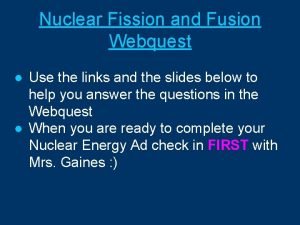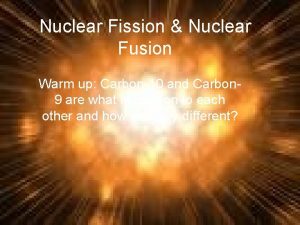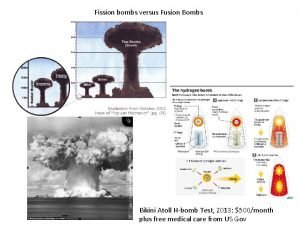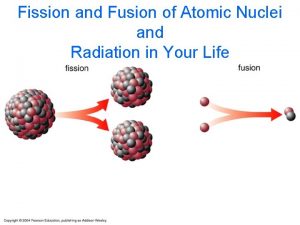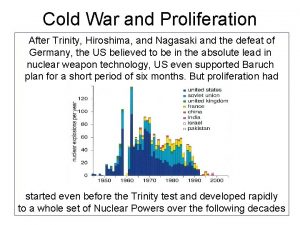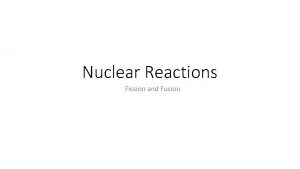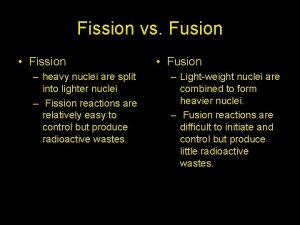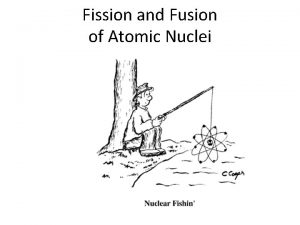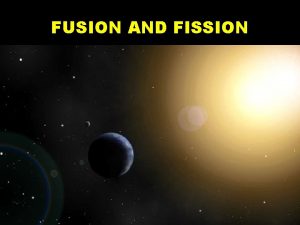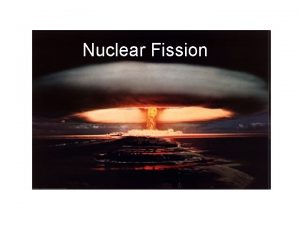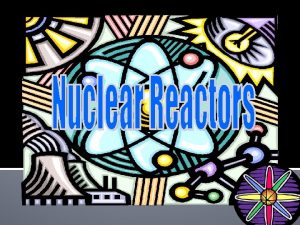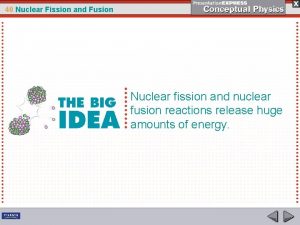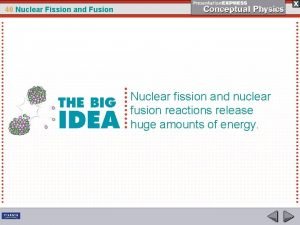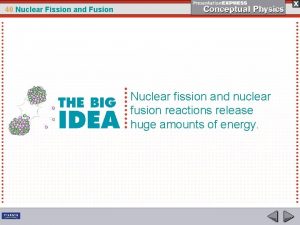25 3 Fission and Fusion of Atomic Nuclei











- Slides: 11

25. 3 Fission and Fusion of Atomic Nuclei SWBAT describe what occurs during fission and fusion, and identify key terms associated with these processes

Nuclear Fission • When the nuclei of certain isotopes are bombarded by neutrons they undergo fission. – Fission: the splitting of a nucleus into smaller fragments. – uranium-235 & plutonium 239 are the only fissionable isotopes • In a chain reaction some neutrons produced react with other fissionable atoms, producing more neutrons, which react with still more fissionable atoms.

Fission of Uranium-235 Nuclear fission can release a lot of energy: 1 kg of Uranium-235 can yield the same amount of energy generated by the explosion of 20, 000 tons of dynamite ü What can happen with the released neutrons?

Nuclear Reactors • Nuclear Reactors use controlled fission to produce useful energy. – Most of the energy formed is heat. – Heat is used to generate steam, which drives a turbine to generate electricity. – Neutron moderation slows down neutrons so that the reactor fuel can continue the chain reaction. Examples of moderators include water and graphite. – Neutron absorption traps slowed neutrons, decreasing the number of slow moving neutrons. Control rods made of cadmium are used to absorb neutrons.

Nuclear Reactor

Nuclear Waste • Fuel rods (made of U-235 or Pu-239) are a major source of nuclear waste. • Spent fuel rods contain a mix of highly radioactive isotopes. • Nuclear power plants place spent rods in holding tanks, where water cools the rods and acts as a radiation shield, reducing radiation levels.

Nuclear Fusion • Fusion occurs when nuclei combine to produce a nucleus of greater mass. • The energy released from the sun is a result of nuclear fusion • Fusion reactions release more energy than fission reactions!

Check for Understanding ü What happens in a nuclear chain reaction? ü Why do neutrons in a reactor need to be slowed down? ü Why are spent fuel rods stored in water? ü How are fission and fusion reactions different/similar? ü Why is fusion not used to generate electrical power?

25. 4 Radiation in Your Life SWBAT identify tools for detecting radiation and the use of radiation in the medical field.

Dating a Fossil • Ages of artifacts and fossils can be determined by carbon-14 dating. – Carbon-14 is an isotope of Carbon containing 6 protons & 8 -neutrons. – Carbon-14 has a half-life of 5730 years (decays to N-14) ü A wooden tool was found to have 50% of Carbon-14 content found in living wood. How old is the wooden tool?

Detecting & Using Radiation • Devices used to detect radiation include: Geiger counters, scintillation counters, and film badges. – These devices detect emitted ions or show photographic evidence of radiation. • Neutron activation analysis is a procedure used to detect trace amounts of elements in samples. • Radioisotopes have an unstable nucleus and undergo radioactive decay. The production of certain radioisotopes can help identify elements originally in the sample. – Radioisotopes can be used to diagnose & treat medical problems
